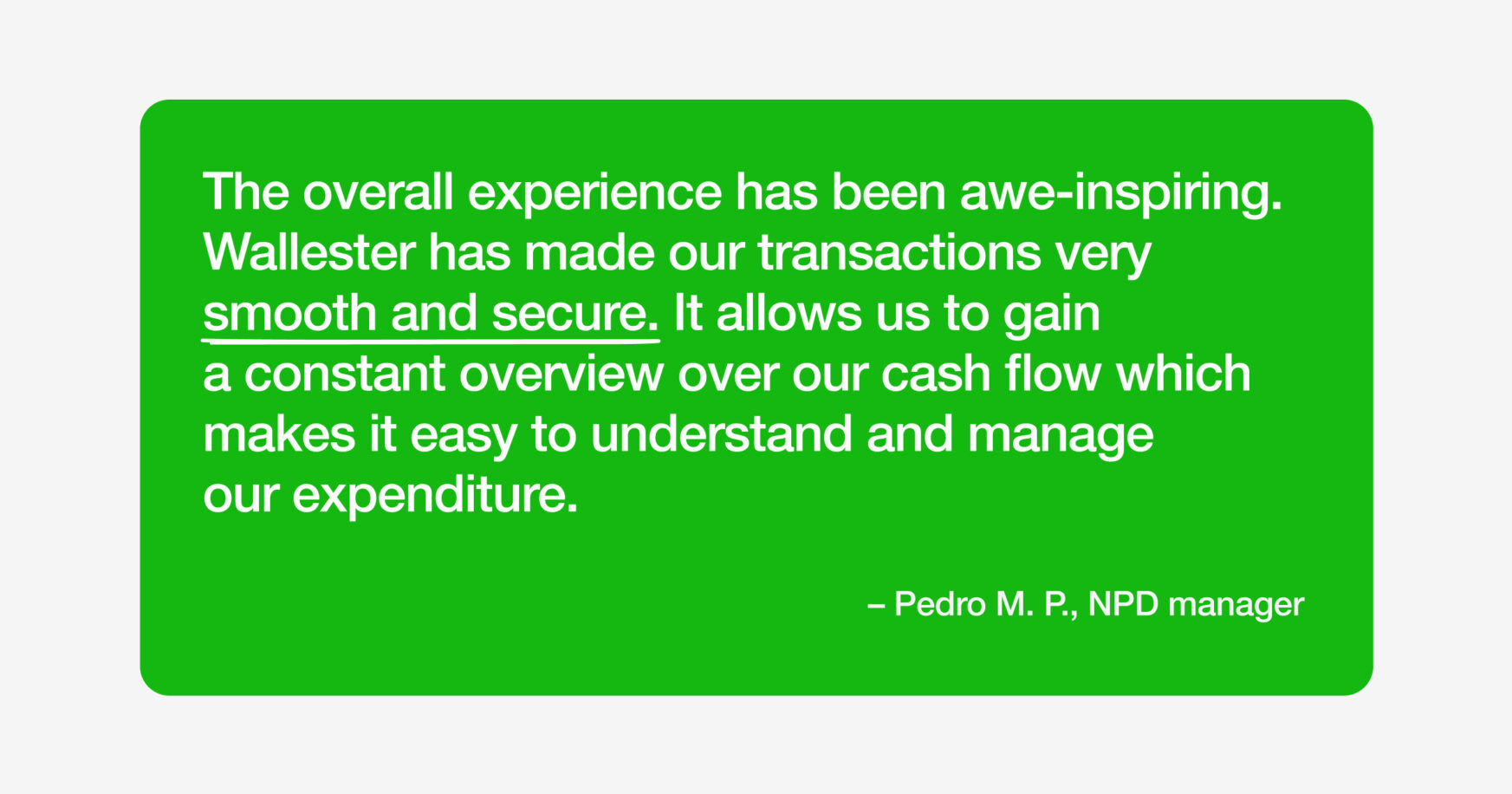Managing business expenses should be simple, yet it’s anything but for many companies. Outdated, manual expense reimbursement workflows are slow, error-prone, and often frustrating for finance teams and employees alike.
For accountants and financial managers, the challenges are all too familiar:
- Manual reconciliation eats up valuable hours, increasing the risk of human error.
- Lack of real-time visibility creates budget blind spots, making financial planning difficult.
- Whether accidental or nefarious, spending fraud remains a persistent issue without proper controls.
- Complex approval processes slow down reimbursements, leading to employee dissatisfaction.
Studies have shown that finance teams spend an average of 30 minutes processing each expense report, and 19% of reports contain errors, leading to additional rework.
The GBTA (Global Business Travel Association) found that the average cost of manually processing an expense report is $58 (€53), but fixing an error can add $52 (€43) per report—nearly doubling the cost.
They also point out the massive loss of time that could be spent more productively. If a company processes 1000 expense reports a year, which is not that high a number when you think about it, they are wasting over 500 hours just on fixing errors.
It is also quite clear that these inefficiencies don’t just cause frustration and wasted time—they also impact cash flow, compliance, and overall financial stability. As businesses scale, outdated expense management systems become even more of a liability, and good leaders recognise this.
Deloitte reports that 69% of CFOs report missing opportunities to cut costs due to slow, manual financial tracking. Realising you could have saved money in an obvious way after the fact is like realising you left the oven on all night—costly, avoidable, and a mistake you won’t want to repeat.
The most telling statistic is that companies with real-time expense tracking are 30% more likely to stay within budget. That’s certainly not insignificant.
So what is the solution? The good news is that it doesn’t have to involve breaking the bank on some expensive system that nobody can figure out and ends up making things even worse than before.
The Shift Toward Smarter Expense Management
The days of an Excel sheet and a folder containing printed invoices are numbered, although not everybody has woken up to that fact. Forward-thinking companies are moving away from traditional reimbursement models and manual oversight in favour of real-time tracking, automation, and digital payment solutions. Instead of employees paying out-of-pocket and submitting expense reports later, many finance teams are now using:
- Pre-approved digital payment methods that eliminate the need for reimbursements.
- Automated accounting integrations to streamline reconciliation.
- Virtual cards and mobile payment solutions for better spending control and security.
This shift reduces administrative burden, improves compliance, and gives businesses better financial oversight. Who wouldn’t want that?
Companies with modern, low-touch expense management systems also have happier employees who are more loyal.
Sapio Research found that 60% of workers feel frustrated by slow, outdated expense approval processes.
If you expect employees to pay for business expenses out of pocket and then delay their reimbursement due to shoddy processes, you directly impact their quality of life. You may as well be helping them bring their CVs up to date.
How Virtual Cards Are Changing Expense Management
One of the biggest game-changers in modern finance is virtual corporate cards. Unlike traditional corporate cards, which are limited in number and difficult to issue at scale, virtual cards allow companies to:
- Instantly generate cards for employees, projects, or departments.
- Set spending limits and expiration dates to prevent overspending.
- Get real-time transaction notifications for better oversight.
With businesses operating in increasingly global and remote environments, the need for flexible, digital-first payment solutions has never been greater, and the statistics bear this out.
Modern businesses are adopting virtual cards at a staggeringly rapid rate. The market will expand from $19.02 billion (€17.6 billion) in 2024 to $65.0 billion (€60 billion) by 2030, with a compound annual growth rate of 21%. This trend indicates increasing adoption and potential profitability for businesses implementing virtual card solutions.
Beyond Virtual Cards: The Role of Automation
Virtual cards can revolutionise expense management. But why stop there? The most efficient finance teams aren’t just switching payment methods—they’re automating every step of the process to eliminate bottlenecks, reduce errors, and improve compliance.
Why Automation Matters
As stated previously, manual finance workflows take up too much time, are subject to human error and drive everyone involved up the wall:
- 50% of finance teams say manual data entry is their biggest pain point (PwC).
- Businesses that automate expense management reduce processing costs by up to 70% (Aberdeen Group).
Key Automation Strategies
So, what can you do to introduce automation? To give you a good starting point, let’s look at how leading finance teams eliminate inefficiencies:
- Real-Time Approvals: Replace slow, multi-level approval chains with instant notifications and one-click expense sign-offs. No more waiting for managers buried in emails.
- Smart Categorisation: AI-powered tools automatically categorise expenses, reducing manual data entry and boosting accuracy by 95 per cent.
- Automated Accounting Integrations: Sync transactions instantly with accounting platforms like QuickBooks, Xero, and NetSuite, cutting reconciliation time in half.
- OCR-Powered Receipt Scanning: No more chasing employees for receipts. Optical Character Recognition (OCR) extracts data from invoices and uploads it directly to accounting systems.
- AI-Driven Anomaly Detection: Identify duplicate claims, out-of-policy spending, and fraudulent transactions before they hit the books.
Featured Use Cases
Different industries and business models require flexible expense management solutions. Here’s how companies are applying modern tools to streamline financial processes:
Business Travel & Expenses
Flights, taxis, hotels, and client meals often require fast, hassle-free payments. Virtual cards and automated expense reporting eliminate the need for reimbursement requests, allowing employees to cover business expenses instantly—no out-of-pocket costs and no paperwork.
Media Buying & Advertising
Managing multiple campaigns across various platforms requires precise budget tracking. Businesses can issue individual virtual cards for specific campaigns, ensuring accurate reporting and easier cost allocation.
Simplified Cash Payments
Not all transactions happen online. Companies that need cash for on-the-ground operations can integrate physical and virtual corporate cards into a central system, providing real-time tracking of every expense without relying on employee reimbursements.
Shared Access Cards for Teams
Some teams require flexible access to shared company funds—whether for office supplies, event planning, or joint projects. Virtual cards with spending controls allow multiple employees to make payments while maintaining visibility and control.
Conclusion: What Smart Businesses Are Doing Differently
Forward-thinking companies are adopting a proactive approach to expense management by:
- Issuing virtual cards with pre-approved limits instead of reimbursing employees.
- Real-time tracking should be used to monitor spending before it becomes a problem.
- Using digital expense management software to control spending.
- Automating reconciliation to reduce month-end accounting delays.
Solutions like Wallester Business offer a practical way to implement these strategies. With instant virtual card issuance, automated integrations, and flexible spending controls, businesses can eliminate reimbursement headaches and gain greater financial transparency.
The results? Faster approvals, improved cash flow visibility, and reduced risk of fraud.
What Wallester Business Users Say

As Jake E., a financial representative, notes: “It has been a very fluent experience with Wallester. We have been able to manage our cash flow through transactions which allows us to maintain our spending within the budgeted cap.”
Rhea S, an internal sales axecutive says: “With Wallester, we have found a reliable tool to streamline our financial processes. It has made our payment processing and expenditure control experience a very productive one.”
Fanya S, a senior fund accountant likes the approval process: Payments are always on time and never fails or gets rejected. Likewise approvals from upper management are always approved due to its receipt scan and upload option.


